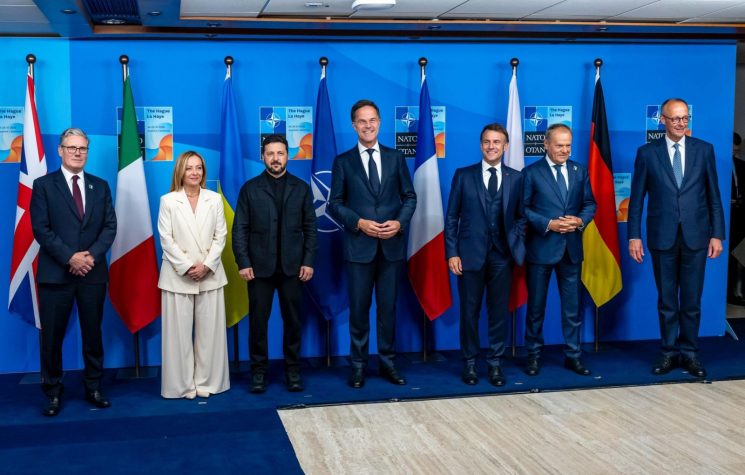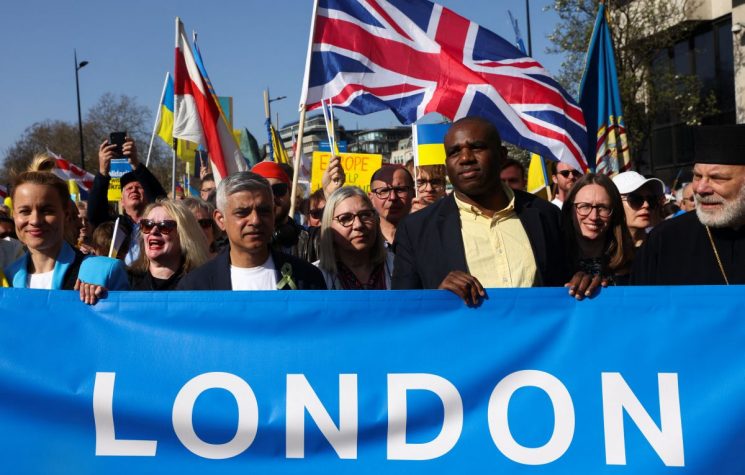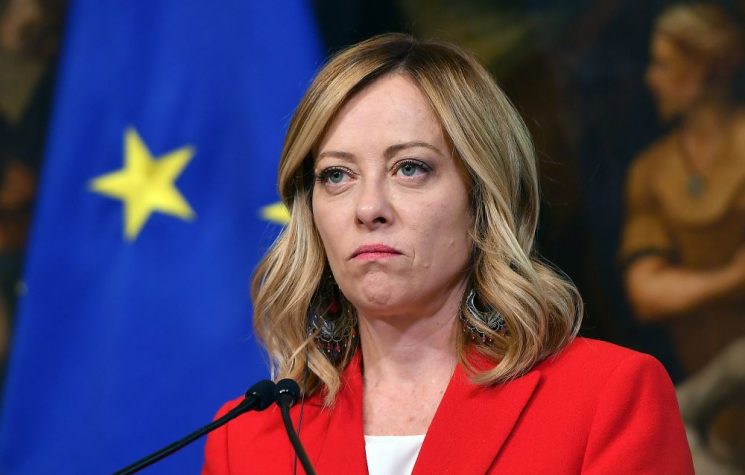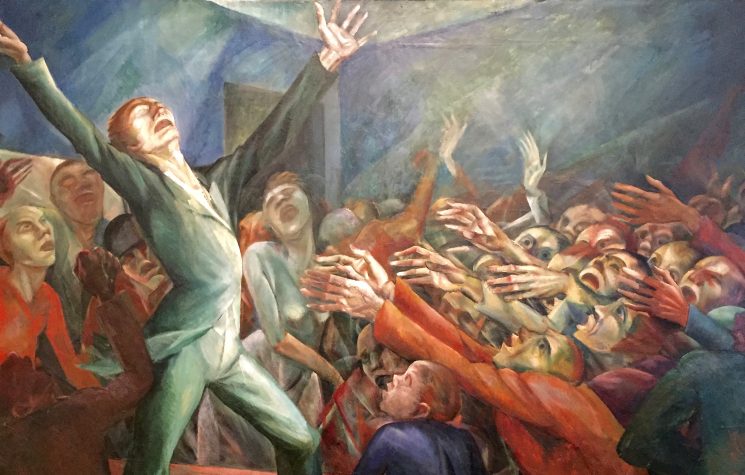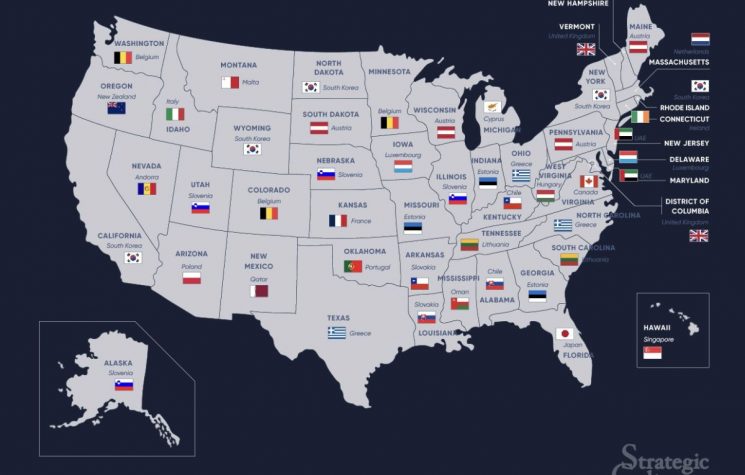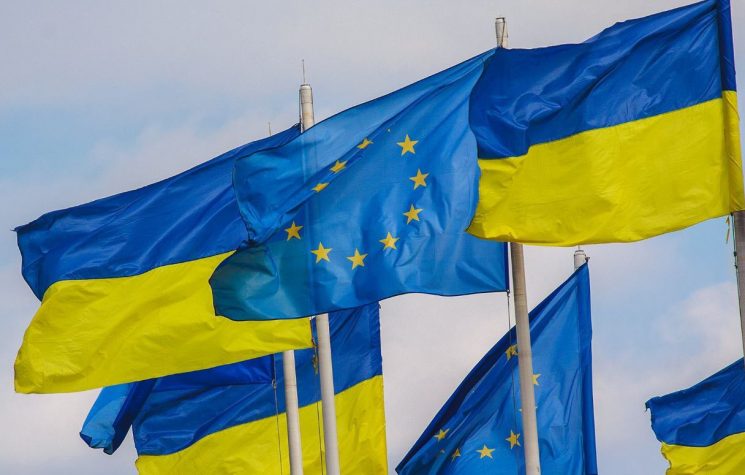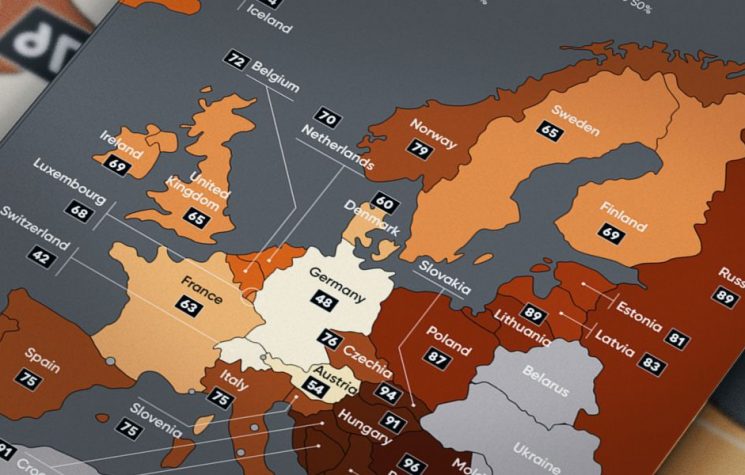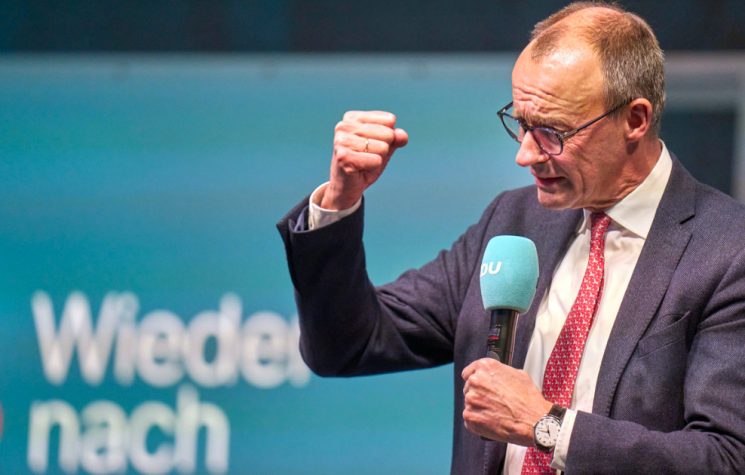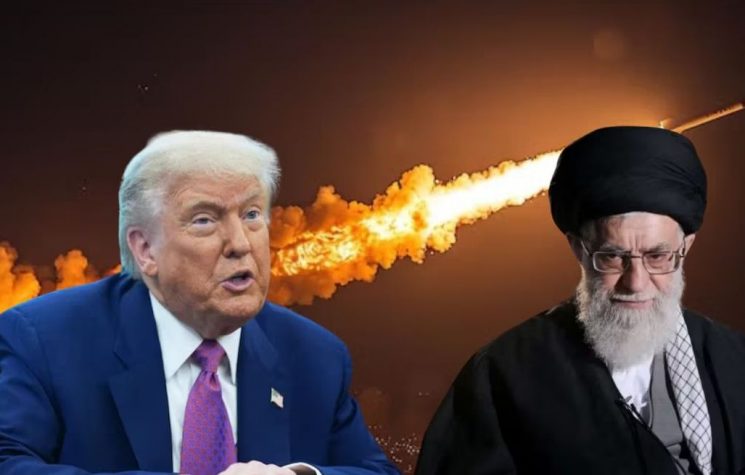The European Union’s co-optation of six ex-Soviet countries around an anti-Russian agenda turned them into a hybrid warfare battleground.
The European Union’s co-optation of six ex-Soviet countries around an anti-Russian agenda turned them into a hybrid warfare battleground and fundamentally undermined Europe’s security architecture.
In February 2007, at the Munich Security Conference, Vladimir Putin delivered a powerful speech that signalled Russia’s newly restored confidence and heralded Russia’s desire and readiness to play a more significant role in international affairs. The Russian president criticized the US attempts to create a unipolar world order as both dangerous and futile at a time when many new poles were appearing. He unequivocally pointed out that NATO expansion and the deployment of missile systems in Eastern Europe constituted a threat to Russia’s security. The US deemed the speech an act of defiance: US-Russia relations grew colder, more tense and Washington started drawing up new plans to contain Russia’s legitimate aspirations. The implementation of these plans required a closer collaboration between NATO and the European Union: spurred by the US, the EU stepped up its involvement in the post-Soviet space.
Obviously, the EU has always had an interest in matters beyond its own borders. For instance, the 2003 European Security Strategy (ESS) had already recommended “preventive engagement” through the promotion of “a ring of well-governed countries to the East of the European Union”(1) but lacked an institutional framework to coordinate efforts. A step change was urged by the US after the Munich speech.
In May 2008, at the EU’s General Affairs and External Relations Council in Brussels, Poland and Sweden put forward the proposal of a special partnership with Armenia, Azerbaijan, Belarus, Georgia, Moldova and Ukraine. During the Prague Summit of May 2009, the concept was officially translated into the Eastern Partnership (EaP).
Ostensibly the EaP was launched to strengthen economic and political cooperation between the EU and the ex-Soviet countries in parallel with cooperation with Russia, but it soon became clear that its real objectives were rather different: tear these countries away from Russia, pull them into the West’s sphere of influence, where they were expected to contribute to the common security and defense policy of the EU and, last but not least, turn them into a springboard for the hybrid war that was to be waged against Russia.
Unsurprisingly the ‘architects’ of the Eastern Partnership were two certified Russophobes, both well placed in the Anglo-American network of influence.
Radosław Sikorski, a former member of the Neocon think tank American Enterprise Institute, two years earlier had renounced his British citizenship, but not his allegiances, to become first Minister of Defence and then Minister of Foreign Affairs in his native country, Poland. His close associate, Carl Bildt, besides serving as a very unpopular Prime Minister and Minister of Foreign Affairs in Sweden, had held prominent positions with influential Atlanticist think tanks. As an enthusiastic war lobbyist he too maintained a very cosy relationship with American Neocons who used him to further their agenda in Europe: in the US diplomatic cables published by Wikileaks, Carl Bildt was described as “a medium-sized dog with a big-dog attitude”, an unflattering but fitting description for someone who is tasked with guarding his master’s interests. The betrayal of his country’s formal neutrality and collaboration with a foreign power dates back to the 1980s, when he passed confidential government papers to his handler in the US embassy.(2)
The EaP was inaugurated by the European Union in Prague on 7 May 2009, while Europe was still suffering from its worst economic recession. A day later in the same city the summit “Southern Corridor — New Silk Road” extolled the benefits of a natural gas supply route from Azerbaijan’s Shah Deniz gas field (operated by BP, its biggest shareholder) to European markets. The $33-billion Southern Gas Corridor, one of the largest and most expensive energy infrastructure projects in the world would leave behind a trail of ecological devastation, scandals and corruption. Nevertheless it won the praise of the US which saw it as a cornerstone of the EU’s policy to diversify away from Russian gas.
Not only are the EaP and the Southern Gas Corridor inextricably linked, Anglo-American fingerprints are all over both projects. The inclusion of Azerbaijan — geographically, culturally and conventionally considered part of Asia — in the EaP served other strategic purposes as well: cementing the pro-Western course of a country that is allied with Israel, Turkey and the US, instrumentalizing Baku to interfere in Northern Iran, derailing Eurasian connectivity projects.
Between rhetoric and reality
The EaP was presented to EU members as an institutionalised forum for discussing visa agreements, free trade deals, and strategic partnership agreements, while avoiding the controversial topic of accession to the European Union. At the time Europe was in the midst of its deepest recession since the 1930s, several EU member states were scrambling to bail out banks and repay their government debt, austerity measures and spending cuts further contracted their GDP, thus increasing poverty and resentment against Eurocrats. It would have been inappropriate to openly discuss the allocation of resources to countries that were not even members of the EU. And yet Brussels quietly started financing programmes in all six EaP countries in coordination with US agencies. The majority of these programmes served to create or consolidate client-patron relations and networks of influence in fields such as legislation, information, security, education, culture and business, under the guise of promoting democracy, human rights and the rule of law, closer political and economic integration, etc.
At the inaugural summit of the EaP, Radosław Sikorski characterized the initiative as evidence of the EU’s soft power, the ability to get what you want through attraction rather than coercion and payment. In other words, projecting an image, a ‘brand’, and shaping the perceptions of others in order to reduce the costs in carrots and sticks of securing desired policy outcomes.
The previous stage of the EU enlargement process had shown that countries gradually adapting to both the EU’s legislative basis and political norms would eventually become parts of the union. But the EU, post-2008, had not only lost its mojo, it could hardly accommodate new members without imploding.
It soon became clear that soft power alone wouldn’t do: millions of euros flew into EaP countries to fund various projects on the basis of conditionality: the funding would be withheld if progress was not made towards “democratization” (i.e. the election of candidates vetted and approved by the US-EU) and fighting corruption (i.e. investigating, and often framing, pro-Russian politicians while bribing their opponents).
Democratization metrics steadily declined year after year but as long as the governments of these countries showed loyalty to the Western bloc and implemented reforms devised by Eurocrats, they would continue to receive financial and political support.
Soon the European Union became the largest donor to EaP states, marketing Europe in terms of grand idealistic goals rather than tangible economic results no one could deliver.
While EaP countries are extremely diverse, they also have much in common: the widespread use of Russian as a lingua franca, a shared past and historical memory, long-standing links with Russia, both commercial, cultural and social. The EU’s task was to assist the US in painting this shared heritage as evidence of “Russian imperialism” and “Soviet totalitarianism” in order to destroy it, cancel the use of Russian, demonize any form of cooperation with the Russian Federation.
Contrary to the expectations of security, stability and socio-economic development that many associated with increased integration under the EU umbrella, Western interference on Russia’s doorsteps brought war, poverty, depopulation, brain drain and instability.
Hardly surprising when you think about the real purpose of the EaP: supporting US geopolitical goals in the region by dangling a few carrots in front of the EU’s Eastern neighbours and hitting them with a stick if they swerved from the prescribed anti-Russian path.
Prior to the creation of the EaP, the US had already orchestrated and funded two colour revolutions that led to regime change in two strategically significant countries on the Eurasian chessboard, the Rose Revolution in Georgia and the Orange Revolution in Ukraine, but the cost of maintaining control over the post-Soviet space was growing exponentially and draining a lot of resources. The US had no choice but outsource some of the tasks and functions to its vassal, the EU. The EaP provided the normative framework to slowly erode the sovereignty and autonomy of member states, thus increasing their dependence on the EU.
Instead of acknowledging Russia’s legitimate security concerns and seeking a peaceful resolution of disputes, the EU has stoked tensions and conflicts in EaP countries. So much for its promises of peace and stability in the region. Five out of six original members of the EaP have now territorial disputes; Ukraine experienced a second US-led coup in 2014 and has been at war ever since thanks to US-NATO-EU all-round support; Belarus, the only country wihout territorial disputes, was the target of a colour revolution in 2020, managed to prevent a a coup and wisely left the partnership. In case one still harbours any doubts as to who supported and partially funded the coup, the EU still lists Belarus as an EaP member recognizing Svetlana Tikhanovskaya and “Belarus’ civil society” as representatives.
While the EaP is virtually unknown among European citizens, for over a decade EU emissaries and their local clients have been promising EaP members various perks and further integration into the EU, in return for severing all ties with Russia and ramping up Russophobia.
Anything could be used as leverage, even visa liberalization, or the threat of its suspension. So far only three countries out of six, Georgia, Moldova and Ukraine have been rewarded with visa-waiver deals in return for “progress toward democracy”. And who could assess their progress better than a US regime change outfit?
Among its many ‘services’, the National Endowment for Democracy (NED) advises the EU on visa matters.(3)
Another lever is the trumped-up EU candidate status, nothing more than a step on the road to nowhere: the waiting list for EU membership is so long the chance of EaP members joining is lower than the chance of the EU dissolving.
At the time of writing only two countries, Moldova and Ukraine, have received candidate status. Ukraine earned it by paying a blood tribute: its soldiers are being used as cannon fodder in the proxy war against Russia. Moldova’s puppet government was rewarded for its anti-Russian stance, though it’s unlikely that the promise of accession to the EU in a distant future will assuage the pain and anger of Moldovan citizens who are dealing with the consequences of economic collapse, the criminalization of political opposition and the loss of energy resources.
If in the past the EU touted accession to its rich men’s club as a path to prosperity and economic growth, after the 2008 financial crash, and the perduring, systemic crisis, that narrative started to sound hollow both inside and outside the club. And that’s why controlling the narrative has become a priority. No expense is spared to manipulate the infosphere, that metaphysical realm of information, data, knowledge, and communication that shapes perception and overshadows empirical observation.
In EaP countries ordinary citizens bore the brunt of Brussels’ neoliberal reforms and suicidal policies: millions of them were forced to emigrate in order to feed themselves and their families. These countries were linked to the Russian market and the reorientation of exports to EU markets not only required costly structural reforms, it also never delivered on its promises.
Very few winners and many losers
As all 5 current EaP countries remain either fragile, undemocratic, economically underperforming, torn by frozen conflicts, or all four at once, the notion that whole societies would enjoy being penetrated by the EU is clearly preposterous.
But, as is always the case, there are a few winners among the millions of losers. They benefitted from the client-patron relationship system that helped build most of the social, political, economic and cultural infrastructure of EU penetration into the post-Soviet space.
EU affiliates and recipients of European aid gained access to powerful networks and sources of funding that enabled them to accrue their political capital, power and status by creating their own clientele. A Georgian acquaintance who runs a marketing and advertising agency told me that 80% of her turnover comes from social marketing campaigns for non-profit organizations sponsored by the EU. It’s hardly surprising that she and her staff actively support all the progressive causes her agency helps promoting: activism and business reinforce each other in a lucrative feedback loop.
The greater part of EU assistance goes to those who promote the simulacrum of Western democracy and “rule-of-law”, selective human rights, the LGBT agenda, the “green new deal” and digital transition, and to those who “combat disinformation”, which is just a code word for producing and spreading Western narratives and anti-Russian propaganda, censoring dissent, cancelling Russian and pro-Russian media.
Focusing on some mythical Western values is easier than delivering prosperity.
Even by its own yardstick, the European Union has failed as an economic entity. The EU’s performance has been dismal compared with other major economies. Stagnation, high unemployment, over-regulation of economic activity and a democratic deficit have led to widespread resentment. Critics point the finger at supranational policy-making and regulation as it takes place in rather technocratic, opaque and closed bodies like committees or agencies that are unelected and shielded from public scrutiny.
The outsourcing of major sectors of policy development to management consultancy firms has led to the loss of accountability, and drained democracy of its meaning.
It’s precisely because of a democratic deficit and legitimation crisis that the democracy rhetoric has been pumped up and large resources are invested in marketing the EU as a bastion of democracy, freedom and human rights.
The EU resembles one giant pyramid scheme: the well-being of the participants in this pyramid is very dependent on whether it will be possible to attract new ones. The most active and evangelical members are invariably those who have joined it relatively recently, like the Baltic states. Their accession to the European Union turned out to be discouraging, rather different from the flowery promises that were made in 2003–04. Foreign direct investment into the Baltic states collapsed during the 2008–09 debt crisis, today it remains subdued and the Baltic states have fallen into a ‘middle income trap’ at around 70% of the EU-15 average income. The EU, like a vampire, sucked them dry economically and demographically, but their “investment” in the scheme means they have to reel in other victims to raise their profile in Brussels. Citizens of Lithuania, Latvia, Estonia and Eastern European countries with British degrees, are conspicuous in regime change outfits, think tanks, NGOs, online and offline influence networks, intelligence and psychological operations. As EU emissaries they provide “technical assistance” to EaP countries, share their experience, especially in the public sector, to facilitate the implementation of political, economic and social reforms and continue to aggressively defend Anglo-American interests in both the EU and post-Soviet states.
Western, liberal values and norms are marketed the way consumer goods are: by preying upon hidden fears of social inadequacy and rejection, by promising status and a sense of moral superiority, by inducing desires that overshadow basic material needs.
It’s often hard to differentiate between Pyramid schemes, Transnational Clientelism, Evangelism marketing and Affiliate marketing, as they tend to overlap. If initially one can observe a distinction, the evangelists believe in what they promote while affiliates benefit from promoting it, eventually the most ambitious and skilled evangelists become affiliates. If we transpose this marketing model to the political sphere, activists perform the function of evangelists. As soon as they build a considerable influence they are offered the opportunity to become affiliates and thus receive incentives such as funding for their campaigns, increased media visibility, a boost to their social media activity, invitations to international conferences, education and career opportunities, a record or a book deal, an international tour, etc. Whatever floats their boat. Once the transition from “activist/evangelist” to “affiliate” is completed, EU promoters become part of a system that can be described as Transnational Clientelism: the discharging of order-making to brokers and intermediaries that works through an asymmetric distribution of benefits. In client politics an organized minority or interest group (lobby) benefits at the expense of the public with negative consequences on democracy.
EU policies generally reflect the interests of transatlantic lobbies and as their power grows so does the repression of dissent.
The ability of the EU to attract simply based on its soft power quickly proved to be a delusion. Co-opting the eastern neighbours and keeping them on board required both payment and coercion.
EaP members soon discovered that there is nothing “free” about Free Trade agreements with the EU: conformity assessments of agricultural or industrial products could be granted or denied based on external, unrelated factors, such as supporting anti-Russian measures for instance. And once products are deemed fit for EU markets, the exporting country realised that it must apply the same EU standards to its imports as well, including public procurement. This requirement is a constraining factor for cheaper imports of industrial goods from certain markets such as China or the CIS(4), leads to higher prices for consumers, a smaller range of products, and the emergence of monopolist importers. The dream of accessing a rich market can easily turn into a nightmare, as the domestic market is put under EU surveillance and held hostage to Western exporters and those ever-changing EU standards.
The myth of superior EU standards has also led to a widespread sense of inadequacy among those who can’t obtain the coveted certificate of compliance, a psychological phenomenon that typically governs the relations between the colonized and the colonizer. After all, there would be no colonialism without a projection of superiority.
The EaP countries will always be found somewhat wanting, they will never satisfy all requirements, because they are only useful insofar as they perceive themselves as inadequate and accept to be lectured, advised, pulled by the sleeve by those “who know better”. To compensate for their inferiority complex the élites of EaP countries project status by embracing the latest Western fads with a zeal that often borders on the ridiculous…and invariably choose an Anglo-American education for their offspring. Now even those with fewer means, but with the right connections, can send their children to a foreign school. In 2018, with the active support of the EU, the first European School for students from EaP countries was launched in Tbilisi, Georgia. But the encroachment of Western education models is not confined to a few schools for the well-connected. In EaP countries extensive reforms were initiated to turn their education system into a vector of Western influence. In the field of exchanges, the EU’s major contribution is through the Erasmus+ programme, which had a total budget for the EU plus third countries of €4.7 billion for 2014–20.
Education is one of the key elements in this colonization project as European education programmes are used as a Trojan horse to demolish existing frames of reference, abolish the study of Russian, replace cultural norms, beliefs and perceptions. They erase the past and rewrite national history as a fight against “Soviet invasion and totalitarism” — even the celebration of a Nazi collaborator, as in the case of Bandera, isn’t beyond the pale. These programmes extol the virtues of a (fictional) common European identity and invariably produce a new generation of West-worshippers primed for migration or war (both hybrid and conventional) against their demonized neighbour, Russia.
NGOs are another crucial conduit of Western influence and pressure in EaP states.
In 2009, alongside the EaP, an Eastern Partnership Civil Society Forum (CSF) was established by the European Commission, apparently because “civil society actors serve as a corrective to state politics in less democratic and authoritarian states in which the parliamentary opposition is unable to fulfill this role”.(5) The weaponization of civil society by the EU was a characteristic of the EaP project from the start.
It is also remarkable that the same text describes an organization set up by the EU Commission as a “civil society initiative”. Yet another example of obfuscation of reality, something the EU has mastered really well.
The Forum doesn’t make a mystery of its activities: “The CSF has organized national platforms in order to have more influence at the governmental level in the EaP states. To some extent, the European Commission also functions as a sort of patron in countries with democratic and constitutional deficits that enables civil society groups to formulate public criticism and gives them more freedom of action. For example, the Belarusian platform has used this freedom of action to develop into a pro-European umbrella organization.”(6) We all know what happened in Belarus in 2020. As is often the case with this kind of “civil society” initiatives, NED provides expertise and support.
In 2012 the CSF established a Secretariat, thus making it even clearer that civil society action is a profession. Local NGOs can apply to participate in the annual Forum but… they are selected by the European External Action Service! Unsurprisingly the CSF is filled with activists, staffers and grantees of Soros’ Open Society and similar outfits. In this fraudulent scheme the EU pays for Soros’ influence operations and guarantees a return on his investments.
But of course CFS and Open Society Foundations are not the only show in town. EaP countries are teeming with NGOs. When it comes to the weaponization of civil society, one of the busiest actors in the EaP is the European Endowment for Democracy (EED), established in 2013 by the EU on the model of its better-known US homologue NED.
EED and NED have spared no efforts in shaping the information, cultural and political landscape of post-Soviet coutries. I could mention dozens of examples, but that’s beyond the scope of this article, so i invite the reader to take a look at NED and EED annual reports.
In Moldova, just to narrow the scope, they supported news outlets, radio and TV programs in Russian and Romanian language that played a critical role in the election of Maia Sandu by attacking and discrediting her political opponents. The irony is that these news outlets are described as “independent” in EED documents. From one of these reports we learn that influencers and popular musicians such as Pasha Parfeny, who had represented Moldova in the 2012 Eurovision Song contest with his song Lautar, were coopted and funded by EED to advance its agenda.(7)
A tragic outcome
Over the years the EaP has changed considerably as reality usually finds a way of asserting itself. It now consists of five member countries, Belarus having de facto left.
Since Armenia and Azerbaijan never sought EU membership, and Armenia joined the Eurasian Economic Union in 2015, the EU has less leverage there than in countries that are eager to join the EU, such as Ukraine, Moldova and Georgia. Only the first two received EU candidate status as a form of compensation for services rendered. Unsurprisingly, they show far worse socio-economic indicators than countries that have retained some degree of autonomy from the West: Ukraine and Moldova were Europe’s poorest countries when the EaP was launched, and still are. Ukrainians, after being targeted by very aggressive information and psychological operations for nearly a decade, ended up fighting a proxy war for NATO. Which is exactly what they had been primed for.(8)
Long before the start of Russia’s special military operation in Ukraine, the US had gained “premium” leverage there, pumping billions of dollars in weapons into Ukraine. For years the country played host to American and European military and intelligence personnel, information war specialists and their technical support teams.
As a matter of fact other EaP countries have been designated by the US as potential sacrificial lambs. Besides Ukraine, US-NATO set up centers to coordinate hybrid war strategies in Georgia and Moldova.
On cue, in February 2019 the EU Parliament announced the establishment of a regional parliament assembly that includes Ukraine, Moldova and Georgia to forge closer cooperation on “strategic issues such as hybrid war and disinformation”. An Informal Working Group on Disinformation was created with the support of the EU Parliament and the National Democratic Institute (NDI), one of the main components of NED.
Following Ukraine, Moldova and Georgia also expressed their desire to join the European Centre of Excellence for Countering Hybrid Threats (Hybrid CoE) based in Helsinki, a EU-NATO joint venture engaged in hybrid warfare. Though they are not listed as participants, they already cooperate with Hybrid CoE.
As if it weren’t enough, a transatlantic lobby dressed up as a think tank in 2020 was calling for an EaP Security Compact: an initiative that would create an Intelligence Support and Coordination Cell within EEAS, the foreign and defense ministry of the EU, to facilitate exchange of intelligence between the EU and EaP countries. Tbilisi and Chisinau have been suggested as locations for intelligence-liaison offices.(9)
The idea that ex-Soviet countries would gradually turn away from Russia under the influence of Western soft power and promises of further integration into the EU, made sense when the EU represented a successful model to emulate and was an engine of growth. But that idea was dangerously delusional in 2009 when the financial crash had already brought down the house of cards. The EU, rather than fixing its systemic problems, concocted new harebrained schemes and hysterically doubled up its virtue signaling in an effort to remain relevant.
Meanwhile the economic and geopolitical center of gravity was moving eastward to Asia and the unipolar world order that had emerged in the 1990s was showing signs of decline. That trend strengthened in the last decade and a multipolar order is now emerging. As the West clings on to its delusions of grandeur and moral superiority the only soft power it can project is based on lies, double standards and empty promises. Liars can create an illusion of truth…till they collapse under the weight of their lies.
But since extracting wealth from a periphery of subject nations and concentrating it in the imperial core require far more than marketing skills, empires are backed and usually imposed by military force. The US empire is no exception and NATO’s militarization of Europe and its eastward expansion accompanied the hypocritical rhetoric of “freedom, democracy and human rights”.
Considering that the EaP initiative was sold to EU members as a way “to secure the eastern flanks of Europe”, which incidentally are also the western flanks of Russia, the conflict in Ukraine and its devastating impact on the political and economic stability of the EU clearly show that the outcome of that expansionistic drive has been tragic not only for EaP countries but for the EU as well.











